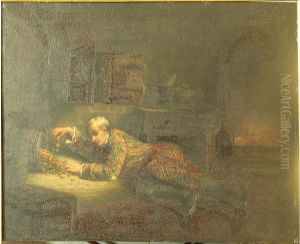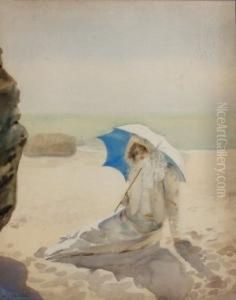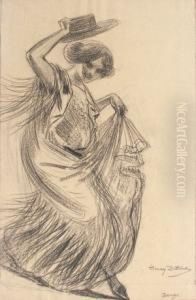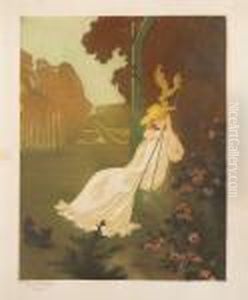Henry-Julien Detouche Paintings
Henry-Julien Detouche was a French painter, engraver, and illustrator whose work spanned the late 19th and early 20th centuries, a period marked by significant artistic innovation and the emergence of new artistic movements. Born in 1854 in Paris, France, Detouche was deeply influenced by the artistic milieu of his time, which was characterized by a vibrant culture of experimentation and a departure from traditional artistic norms. His oeuvre reflects a variety of influences, from the academic to the avant-garde, demonstrating his versatility and adaptability as an artist.
Detouche received his formal art education at the École des Beaux-Arts in Paris, where he was trained in the academic tradition. However, his artistic curiosity and willingness to explore new ideas led him to experiment with various styles and techniques throughout his career. He was particularly known for his skill in engraving and etching, mediums through which he achieved a high degree of detail and texture in his works. Detouche's engravings often depicted landscapes, scenes of Parisian life, and historical subjects, showcasing his ability to capture both the grandeur and the minutiae of his subjects.
Beyond his technical skills, Detouche was an observer of society and its changes. His illustrations for books and periodicals are notable for their commentary on contemporary life and politics. He contributed to various publications of his time, where his illustrations helped to visualize the narratives and ideas of the burgeoning literary and intellectual culture of Paris.
Despite his contributions to the arts, Henry-Julien Detouche remains a somewhat enigmatic figure, overshadowed by his contemporaries who were more prominently involved in the major artistic movements of the time, such as Impressionism and Post-Impressionism. Nevertheless, his work offers a fascinating glimpse into the transitional period of art between the 19th and 20th centuries, bridging the gap between traditional academic art and the modernist experiments that would define the early 20th century.
Detouche's legacy, though not as widely recognized as that of some of his peers, is preserved in the collections of French museums and in the annals of art history as an example of the rich and diverse artistic production of his era. He passed away in 1913, leaving behind a body of work that continues to be appreciated for its craftsmanship, historical value, and insight into the culture of his time.



